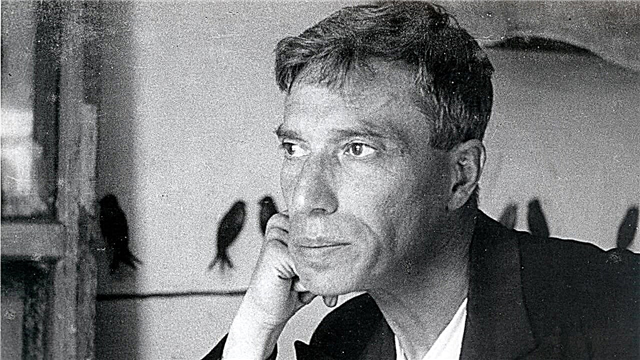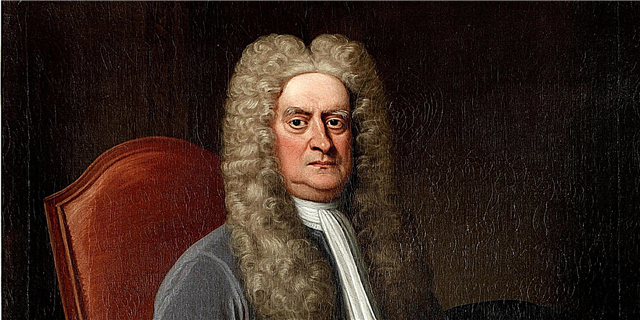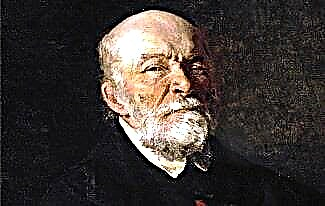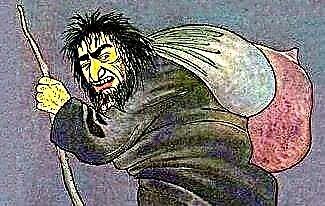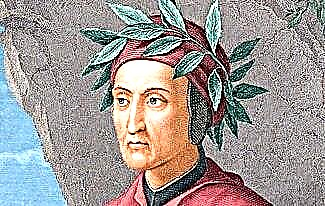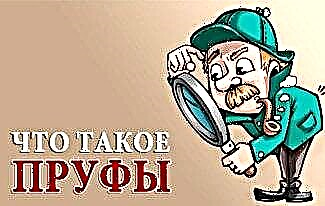Mikhail Sholokhov's novel “Quiet Don” is one of the greatest works of not only Russian, but of all world literature. Written in the genre of realism, a novel about Cossack life during the First World War and the Civil War made Sholokhov a world famous writer.
Sholokhov managed to turn the story of the life of a relatively small stratum of the people into an epic canvas showing the profound changes in the souls of all people caused by military and political upheavals. The characters of “Quiet Don” are written out amazingly vividly, there are no “black” and “white” heroes in the novel. The writer managed, as far as possible in the Soviet Union during the writing of The Quiet Don, to avoid “black and white” assessments of historical events.
The main theme of the novel, of course, is the war, which grew into a revolution, which, in turn, grew into a new war. But in “Quiet Don” the writer was able to pay attention to the problems of moral search, and the relationship between fathers and children, there was a place in the novel and love lyrics. And the main problem is the problem of choice, which repeatedly confronts the characters of the novel. Moreover, they often have to choose from two evils, and sometimes the choice is purely formal, forced by external circumstances.

1. Sholokhov himself, in an interview and autobiographical notes, attributed the beginning of work on the novel "Quiet Don" to October 1925. However, a careful study of the writer's manuscripts corrected this date. Indeed, in the fall of 1925, Sholokhov began writing a work about the fate of the Cossacks in the revolutionary years. But, based on the sketches, this work could become the maximum story - its total volume would hardly exceed 100 pages. Realizing that the topic can only be revealed in a much larger work, the writer quit work on the text he had begun. Sholokhov focused on collecting factual material. Work on "Quiet Don" in its existing version began in Vyoshenskaya on November 6, 1926. And this is how the empty sheet is dated. For obvious reasons, Sholokhov missed November 7. The first lines of the novel appeared on November 8. Work on the first part of the novel was completed on June 12, 1927.
2. According to the calculations of the famous historian, writer and researcher of the works of M. Sholokhov Sergei Semanov, 883 characters are mentioned in the novel “Quiet Don”. 251 of them are real historical figures. At the same time, the researchers of the draft of "Quiet Don" note that Sholokhov planned to describe several dozen more people, but still did not include them in the novel. And on the contrary, the fates of real characters have repeatedly crossed with Sholokhov in life. So, the leader of the uprising in Vyoshenskaya, Pavel Kudinov, deduced in the novel under his own name, fled to Bulgaria after the defeat of the uprising. In 1944, after the arrival of Soviet troops in the country, Kudinov was arrested and sentenced to 10 years in the camps. After serving his sentence, he was forcibly repatriated to Bulgaria, but managed to get in touch from there with M.A.Sholokhov and came to Vyoshenskaya. The writer could have introduced himself to the novel - as a 14-year-old teenager, he lived in Vyoshenskaya in the very house near which the widow of the murdered Cossack officer Drozdov brutally dealt with the communist Ivan Serdinov.
3. The talk that Sholokhov was not the real author of “Quiet Don” began in 1928, when the ink had not yet dried on the copies of the magazine “October”, in which the first two volumes were printed. Aleksandr Serafimovich, who was then editing Oktyabr, explained the rumors with envy, and considered the campaign to spread them to be organized. Indeed, the novel was published for six months, and critics simply did not have time to fully analyze the text or plot of the work. A deliberate organization of the campaign is also very likely. Soviet writers in those years were not yet united in the Writers' Union (this happened in 1934), but were in a dozen different unions and associations. The main job of most of these associations was to hunt competitors. Those who wanted to destroy a colleague in the craft among the creative intelligentsia were enough at all times.
4. What is called, out of the blue, Sholokhov was accused of plagiarism because of his youth and origin - by the time the novel was published he was not even 23 years old, most of which he lived in a deep, according to the capital's public, province. From the point of view of arithmetic, 23 is really not an age. However, even in the years of peace in the Russian Empire, children had to grow up much faster, let alone the years of revolutions and the Civil War. Sholokhov's peers - those who managed to live up to this age - had tremendous life experience. They commanded large military units, managed industrial enterprises and territorial authorities. But for the representatives of the “pure” public, whose children at the age of 25 after graduating from university were just beginning to figure out what to do, Sholokhov at 23 was an inexperienced teenager. For those in business, this was the age of maturity.
5. The dynamics of Sholokhov's work on “Quiet Don” can be clearly seen from the correspondence of the author, who worked in his native land, in the village of Bukanovskaya, with Moscow editors. Initially, Mikhail Alexandrovich planned to write a novel in 9 parts, 40 - 45 printed sheets. It turned out the same work in 8 parts, but on 90 printed sheets. Pay has also increased significantly. The initial rate was 100 rubles per printed sheet, as a result, Sholokhov received 325 rubles each. Note: in simple terms, in order to translate printed sheets into the usual values, you need to multiply their number by 0.116. The resulting value will approximately correspond to the text printed on an A4 sheet of 14 in a font with one and a half spacing.

6. The publication of the first volume of "Quiet Don" was celebrated not only by the traditional use of strong drinks. Next to the grocery store, which bought food and drinks, there was a store "Caucasus". In it, Mikhail Alexandrovich immediately bought a Kubanka, a burka, beshmet, a belt, a shirt and daggers. It is in these clothes that he is depicted on the cover of the second volume published by Roman-Gazeta.
7. The argument about the incredible youth of the author of The Quiet Don, who at the age of 26 finished the third book of the novel, is completely refuted even by purely literary statistics. Alexander Fadeev wrote "Spill" at the age of 22. Leonid Leonov at the same age was already considered a genius. Nikolai Gogol was 22 when he wrote Evenings on a Farm near Dikanka. Sergei Yesenin at 23 was popular at the level of current pop stars. The critic Nikolai Dobrolyubov has already died at the age of 25, having managed to enter the history of Russian literature. And not all writers and poets could boast of having a formal education. Until the end of his life, Ivan Bunin, like Sholokhov, managed four classes in the gymnasium. The same Leonov was not admitted to the university. Even without looking at the work, one can guess from the title of Maxim Gorky's book “My Universities” that the author did not work out with classical universities.
8. The first wave of accusations of plagiarism fell asleep after a special commission working under the leadership of Maria Ulyanova, having received drafts of the novel “Quiet Don” from Sholokhov, unequivocally established the authorship of Mikhail Alexandrovich. In its conclusion, published in Pravda, the commission asked citizens to help identify the source of the slanderous rumors. A small surge of “evidence” that the author of the novel was not Sholokhov, but rather a well-known writer Fyodor Kryukov, happened in the 1930s, but due to a lack of organization, the campaign quickly died down.
9. “Quiet Don” began to be translated abroad almost immediately after the books were published in the Soviet Union (in the 1930s, copyright had not yet become a fetish). The first translation was published in Germany in 1929. A year later, the novel began to be published in France, Sweden, Holland and Spain. Conservative Great Britain began reading Quiet Don in 1934. It is characteristic that in Germany and France Sholokhov's work was published in separate books, and on the shores of Foggy Albion “Quiet Don” was published in pieces in the Sunday edition of the Sunday Times.
10. The emigre circles received “Quiet Don” with an unprecedented enthusiasm for Soviet literature. Moreover, the reaction to the novel did not depend on political preferences. And monarchists, and supporters, and enemies of the Soviet regime spoke of the novel exclusively in positive tones. The rumors of plagiarism that appeared were ridiculed and forgotten. Only after the emigrants of the first generation went, for the most part, to another world, did their children and grandchildren spin the wheel of slander again.

11. Sholokhov never saved preparatory materials for his works. At first, he burned drafts, sketches, notes, etc., because he was afraid of ridicule from colleagues - they say, they say, he is preparing for the classics. Then it became a habit, reinforced by increased attention from the NKVD. This habit was preserved until the end of his life. Even without being able to move, Mikhail Alexandrovich burned what he did not like in the ashtray. He kept only the final version of the manuscript and its typewritten version. This habit came at a great cost to the writer.
12. A new wave of accusations of plagiarism arose in the West and was picked up by the dissident Soviet intelligentsia after the award of the Nobel Prize to M. A Sholokhov. Unfortunately, there was nothing to repel this attack - the drafts of The Quiet Don, as it turned out, were not preserved. The handwritten draft, which was kept in Vyoshenskaya, was handed over by Sholokhov to the local NKVD, but the regional department, like Sholokhov's house, was bombed. The archive was scattered through the streets, and the Red Army men managed to collect something literally from leaflets. There were 135 sheets, which is minuscule for a manuscript of an extensive novel.
13. The fate of a "clean" draft is similar to the plot of a dramatic work. Back in 1929, after submitting the manuscript to the commission of Maria Ulyanova, Sholokhov left it with his friend the writer Vasily Kuvashev, in whose house he stayed when he came to Moscow. At the beginning of the war, Kuvashev went to the front and, according to his wife, took the manuscript with him. In 1941, Kuvashev was captured and died of tuberculosis in a prisoner of war camp in Germany. The manuscript was considered lost. In fact, the manuscript did not get to any front (who will drag a voluminous manuscript to the front in a duffel bag?). She was lying in Kuvashev's apartment. The wife of the writer Matilda Chebanova harbored a grudge against Sholokhov, who, in her opinion, could facilitate the transfer of her husband from the infantry to a less dangerous place. However, Kuvashev was taken prisoner, no longer an ordinary infantryman, but becoming, under the patronage of Sholokhov, a war correspondent and an officer, which, unfortunately, did not help him - an entire army was surrounded. Chebanova, whom Sholokhov's children called “Aunt Motya,” even tore from her husband’s front letters the places where he was interested in whether she had given the manuscript to Sholokhov. Already during the years of perestroika, Chebanova tried to sell the manuscript of The Quiet Don with the mediation of journalist Lev Kolodny. The price was at first $ 50,000, then it rose to $ 500,000. In 1997, the Academy of Sciences did not have that kind of money. Proka and Chebanova and her daughter died of cancer. The niece of Chebanova, who inherited the property of the deceased, handed over the manuscript of The Quiet Don to the Academy of Sciences for a reward of $ 50,000. It happened in 1999. 15 years have passed since the death of Sholokhov. How many years of life the persecution took from the writer is difficult to say.
14. From the point of view of the number of people to whom the authorship of The Quiet Don was attributed, Mikhail Alexandrovich Sholokhov is clearly the leader among Russian writers. It can be called “Russian Shakespeare”. As you know, the author of “Romeo and Juliet” and other works of world importance also aroused and is causing great suspicion. There are entire societies of people who believe that instead of Shakespeare, other people wrote, up to Queen Elizabeth. There are about 80 such “real” authors. Sholokhov's list is shorter, but he was also accused of plagiarizing only one novel, and not the entire work. The list of the real authors of "Quiet Don" in different years included the already mentioned A. Serafimovich and F. Kryukov, as well as the artist and critic Sergei Goloushev, Sholokhov's father-in-law (!) Pyotr Gromoslavsky, Andrei Platonov, Nikolai Gumilyov (shot in 1921), Don writer Victor Sevsky (shot in 1920).
15. “Quiet Don” was reprinted 342 times in the USSR alone. The reissue of 1953 stands apart. The editor of the publication was Kirill Potapov, a friend of Sholokhov's. Apparently, guided by exclusively friendly considerations, Potapov made more than 400 edits to the novel. The overwhelming majority of Potapov's innovations concerned not style or spelling, but the content of the novel. The editor made the work more “red”, “pro-Soviet”. For example, at the beginning of the 9th chapter of the 5th part, he inserted a fragment of 30 lines, telling about the triumphal march of the revolution across Russia. In the text of the novel, Potapov also added telegrams of the Soviet leaders to the Don, which do not at all fit into the fabric of the narrative. The editor turned Fyodor Podtyolkov into a fiery Bolshevik by distorting his description or the words written by Sholokhov in more than 50 places. The author of “Quiet Don” was so outraged by Potapov's work that he broke off relations with him for a long time. And the publication became a rarity - the book was printed in a very small print run.

